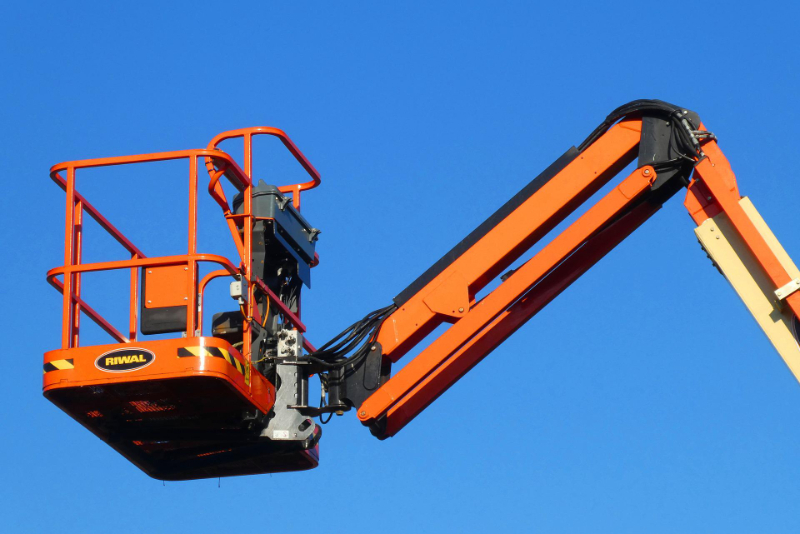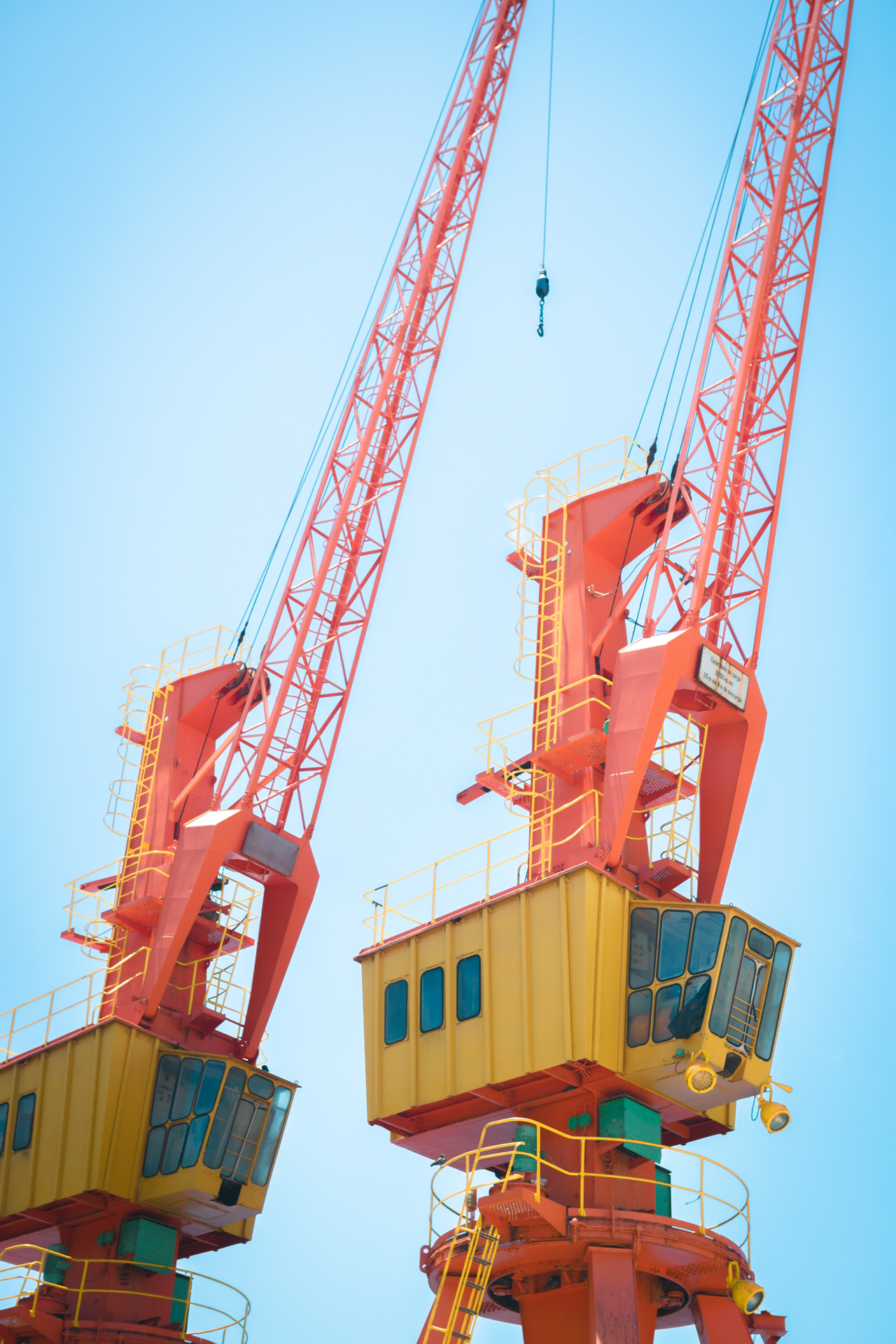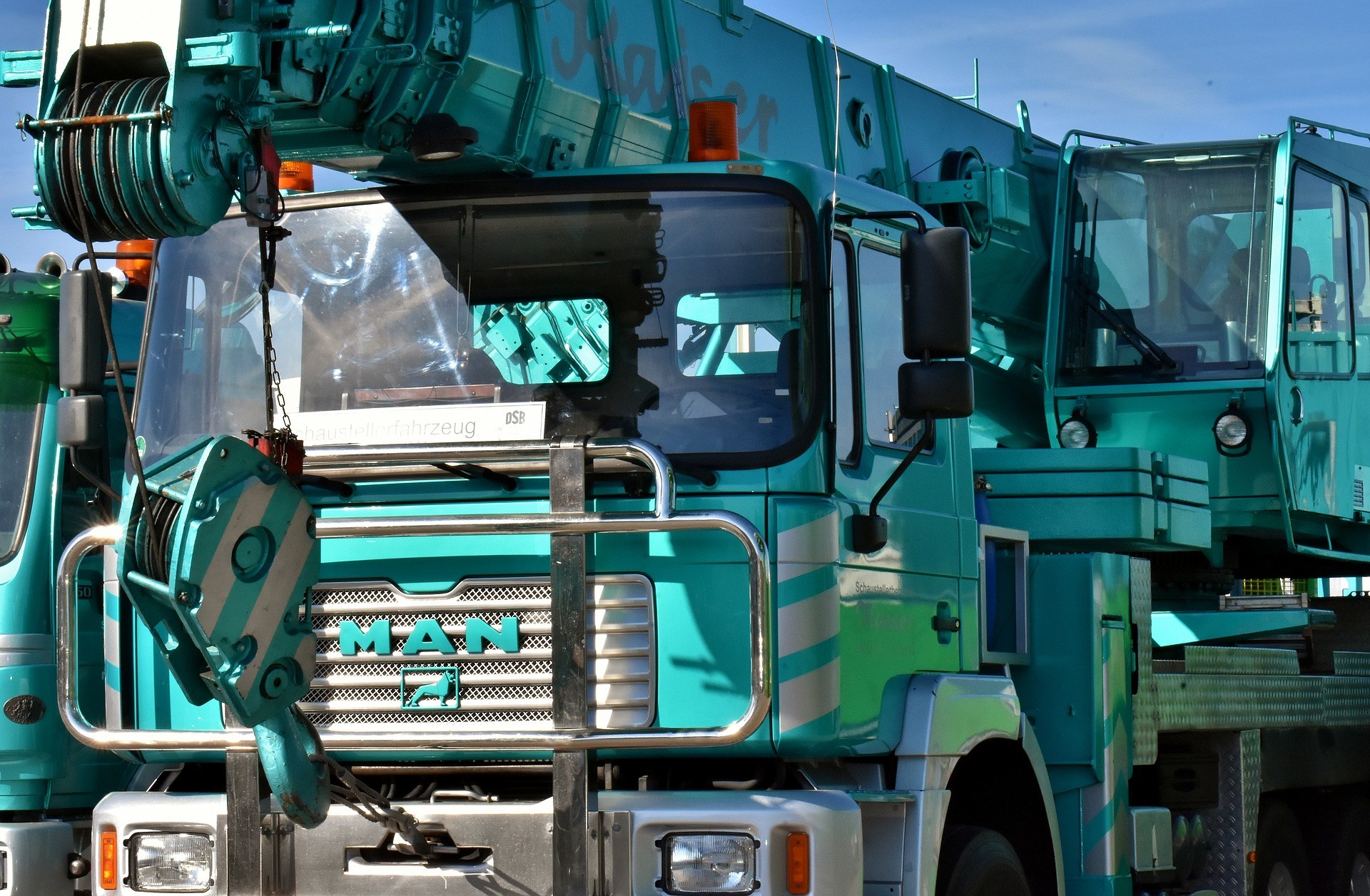What equipment is used for lifting? We look at what is lifting equipment and the types of lifting equipment used in construction.
The lifting equipment covered by LOLER (Lifting Operations and Lifting Equipment Regulations 1998) is incredibly wide-ranging and can be found in numerous industries.
You're likely to find some lifting equipment in almost any sector, from healthcare to commercial enterprises to construction.
This is mainly due to technological advances allowing easy access to versatile and powerful lifting equipment.
Different Types of Lifting Equipment Used in Construction
Most construction projects require people to work at height, meaning they need adequate lifting equipment for the job. So it's probably a good thing there's such a breadth of choice for modern lifting equipment.
In essence, most of this work equipment consists of a platform mounted on a lifting arm that is itself mounted to a cabin, base or mobile vehicle. They are mostly used to lift materials, equipment, other machines or people.
Given the range of applications of modern lifting equipment, if you are looking for the right piece for your project, there are a few considerations you must bear in mind.
These include the strength of the work equipment, what attachments or lifting accessories you can fit it with and how it will function on site. With so much choice, it can be tricky to know where to start.
That's why we've listed some of the most popular lifting equipment and what it is typically used for.
Hoists
Construction hoists are one of the safest and easiest lifting equipment you can use, so you're likely to find one or two on any construction site.
They are essentially elevator platforms attached to towers with a cabin and controls and permanently attached lifting eyes. Most hoists are used to move people and materials straight up in the air overhead using diesel or electric motors, hydraulics systems or chains.
There are three main types of hoists:
Mobile Hoists: As the name suggests, these hoists can be moved around your construction site. They typically have an operational capacity of 1,100 lbs and a maximum height of 98 ft.
Passenger Hoists: These hoists are mainly used for lifting people, with one or two cages mounted to the central tower. They typically have an operational capacity of 2,200 lbs.
Small Package Hoists: Using an electric motor, a lifting arm and a wire rope, these hoists are mounted to central scaffolding and can lift a maximum weight of 1,100 lbs.
Cranes
Cranes are probably the main thing that comes to mind when you think of lifting equipment. This is because cranes are incredibly versatile pieces of heavy machinery, so you'll naturally see them on almost any construction site.
The variety of size, strength, mobility, and ease of operation makes cranes, whether hydraulic or otherwise, almost the perfect equipment.
Despite the wide variety of cranes out there, they can all be sorted into three rough categories:

Mobile Cranes
Tower Cranes
Static Cranes
Forklifts
Like cranes, forklifts are another favourite, mainly in the commercial and warehousing industry.
They mainly transport materials using pallet forks but offer fantastic efficiency in this capacity. While they may be limited to working on flat ground on a single level, they are relatively easy to use for qualified persons and are incredibly convenient.
Lifting Tables
These come in various configurations and can be used for general purposes or modified for more specialised work. They also have different power systems, including:
Manual: The operator must pump, crank or screw the table up into position.
Pneumatic: Pressurised air cylinders push the compression mechanism to raise the table.
Hydraulic: Pressurised hydraulic systems power a linear actuator with hydraulic fluids.
Electric: An electric motor lifts the table once activated.
You only need to activate the power when lifting the table, given that most have slow-release systems for bringing loads back down.
Lifting Platforms
This is an umbrella term for several work surfaces, including trestles, gangways, scaffolding or mobile platforms for working at height. To have a lifting platform that works for you, you should consider:
- The size or amount of material you need to lift.
- How stable the surface is that the platform will stand on.
- The platform's functionality on your site.
- Health and safety requirements for your employees.
When choosing between lifting platforms or tables, your main concern should be the safety of those using them as working platforms.
Ensuring they can work safely and efficiently in a properly planned project is why most people choose this work equipment in the first place.
This means looking at the operational load capacity, physical dimensions and other factors that affect safety.
Scissor Lifts
Scissor lifts are very similar to lifting tables, given they are primarily used to transport people for construction work at height.
They are so called because the moving sections of the lift form an X shape and open and close like a pair of scissors as the lift moves. This works by applying pressure from either side to the lowest set of sections, forcing them together and elongating those above it.
They can reach impressive heights of up to 60 feet and are very stable work platforms. Some are also equipped with wheels to aid with moving them around your construction site.
You can use them indoors and outdoors, but you'll mostly find them outside being used for cladding or window installations or exterior building repairs.

Hydraulic Elevators
Hydraulic elevators are one of the newest additions to the lifting equipment genre and are one of the safest and most reliable ways of transporting materials.
As the electric motor forces hydraulic oil into the cylinder at the base, a piston is forced upwards, which raises the elevator cab. When lowering loads, an electric valve maintains a smooth descent.
Boom Lifts
Again, given the great advances in lifting technology and the subsequent growth of this corner of the manufacturing construction industry, you may be surprised to find that boom lifts remain one of the most popular pieces of equipment on construction sites.
In fact, boom lifts accounted for over a third of all lifting equipment sales in 2020.
Those who don't find these facts surprising understand just how flexible they can be. You can use boom lifts on rough terrains thanks to their fantastic safety features. But, what kind you should choose depends on what you need from your boom lift.
There are essentially two choices: articulating and telescopic. Both have advantages and disadvantages, but boom lifts generally offer fantastic safety and versatility.
Cherry Pickers
Cherry pickers are another common sight around the UK when it comes to lifting equipment.
Created as a way to avoid having to constantly move ladders while working at height, cherry pickers have become a firm favourite in numerous industries. You can use them for almost any work at low to medium heights, including cleaning, fire rescue, painting, and decorating fixed points.
This versatility is thanks to the essential cherry picker design. With a stable truck base, an articulated arm and a platform or bucket attached to the end, this basic idea has made working at height infinitely easier than it used to be.
With controls on the platform or bucket, a single person can operate the entire cherry picker, making it incredibly easy and efficient to use.

Telehandlers
You can basically think of telehandlers as giant forklifts. Both have wheeled mobile cabs with fork attachments used to lift materials to heights. But telehandlers can reach higher and lift heavier loads, with an articulated telescopic arm allowing them to move in various directions. They also offer great precision lifting and stability.
If you're considering a telehandler for your construction project, you'll likely be choosing between a standard fixed boom or a rotating one.
The essential difference is that the fixed boom telehandler can lift vertically, while the rotating model can lift in all directions with semi-permanent fixed attachments.
Heavy-duty telehandlers are another option, with these models able to lift materials up to 6,000 lbs to a height of 56 ft.
Stackers
Stackers are ideal when you need to pile large amounts of loose bulk materials sacks, including things like raw ore, coal or stone. Most stackers are found attached to tracks, which they use to move between piles of material they need to lift.
There are also three kinds of movements which allow stackers to stack these materials:
Travelling: This is when the stacker moves along its tracks using traction motors connected via 12 - 22 bevel gears.
Luffing: This is the vertical movement of the stacker, which is facilitated by either a winch mechanism or hydraulic cylinders.
Slewing: This is the stacker's rotational movement around its central axis. The slew base remains static as the slew pinion rotates the stacker to move materials.
You can operate stackers from a cabin placed above the boom, or they can be fully automated and operated remotely for additional worker safety.
Which stacker is best suited to your work and lifting needs depends on several things, including how you want to stockpile your materials, what kind of materials you are working with, your desired stacking methods and other equipment you are using.
Strand Jacks
Strand jacks are the lifting equipment you need for lifting seriously heavy materials. A four-strand jack can lift up to 400 tonnes to great heights.
They are also one of the most cost-effective and safest ways to lift heavy loads, thanks to their automated operation.
Any loads lifted in such a way with strand jacks will resemble the four legs of a table, with the load lifted dangling in the middle of the four lifting points.

Requirements for safe use of lifting equipment
Any lifting equipment you use must meet the maintenance and operational standards set out by the Lifting Operations and Lifting Equipment Regulations 1998 (LOLER) and the Health and Safety Executive.
Essentially, these regulations are in place to ensure that only competent persons can operate lifting equipment and are appropriately supervised while doing so in a safe manner.
These regulations also stipulate that any lifting equipment used on construction sites must be fit for purpose, suitably marked and subjected to regular statutory inspections known as "thorough examinations".
This last regulation refers to your crane operator, who must inspect the lifting equipment on a daily basis to ensure it is safe to use and in good condition.
To carry out these safety checks, your operator should be given an overhead cranes inspection checklist.
This list will denote all the major risks and hazards identified in your risk assessment when using your lifting equipment, allowing the crane operator to avoid any potential accidents. You must also record the inspection of all your lifting equipment on a Statutory Inspection Report Form.
If you require crane hire services in the Kent, London or South England areas, we can help. Our crane and lifting services are based in Gravesend but we can work throughout the UK.

